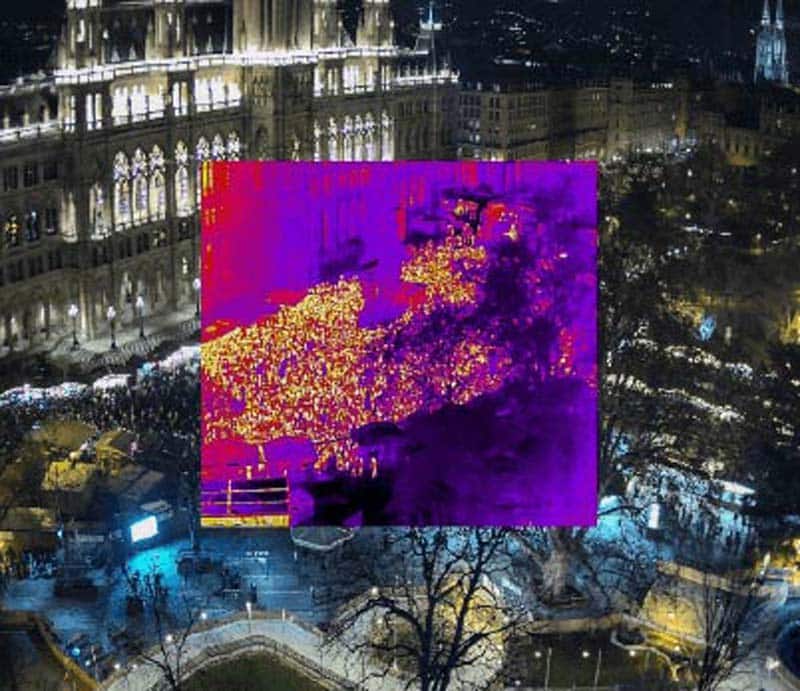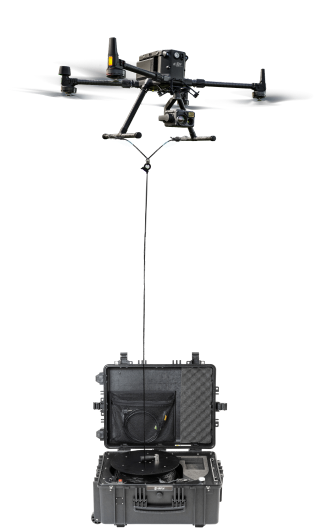Law Enforcement Drones: In Which Situations and for What Types of Business?
These unmanned aerial vehicles (UAVs) have become integral to various operations, from crime scene investigations to search and rescue missions. But in which situations are these drones most effective, and what types of law enforcement businesses are benefiting from their deployment ?
Situations Where Law Enforcement Drones Are Essential
Crime Scene Investigation
One of the primary uses of law enforcement drones is in crime scene investigations. These public safety drones provide a bird’s-eye view, allowing officers to capture aerial surveillance and detailed images of the scene. This can be particularly useful in large or complex crime scenes where ground-level photography might miss critical details. For example, drones can document the layout of a crime scene, capture evidence from various angles, and even create 3D models for later analyzing. Law enforcement agencies have found that using police drones speeds up investigations and improves the accuracy of the collected data.
In Nevada, the Douglas County Sheriff’s Office has used drones for a range of tasks, including crime scene documentation and accident reconstruction. Drones equipped with aerial view, 3D mapping, and thermal imaging systems have proven invaluable in providing detailed and precise data that can be used in court.
Crowd Control and Public Events
Managing large crowds at public events is another situation where law enforcement drones prove invaluable. These drones can monitor the crowd from above, providing real-time surveillance footage that helps public safety officers respond swiftly to any incidents. For instance, during protests or large gatherings, drones offer a comprehensive view that helps in identifying potential threats or disruptions. This capability enhances event security by allowing officers to deploy resources more efficiently and ensure a swift response to any emergencies.
The New Orleans Police Department announced last fall that it would join over 1,400 communities in the US that deploy drones for law enforcement. Their drones are utilized for monitoring events, search and rescue operations, hazardous spills, suspect searches, and documenting crime scenes.
Search and Rescue Operations
Search and rescue missions are critical scenarios where drones shine. In situations where time is of the essence, such as finding missing persons or rescuing disaster victims, law enforcement drones can cover large areas quickly and provide aerial views that are otherwise inaccessible. Equipped with thermal cameras, these drones can locate individuals in challenging environments, such as dense forests or disaster-stricken areas, significantly increasing the chances of a successful rescue. The Federal Aviation Administration has supported the integration of drones in these missions, highlighting their importance in officer safety and risk mitigation. Drones in public safety applications like these demonstrate their potential in saving lives and improving emergency response efforts.
Types of Businesses Benefiting from Law Enforcement Drones
Federal Law Enforcement Agencies
Federal law enforcement agencies, including the FBI and Homeland Security, as well as firefighters, have been early adopters of drone technology.. These government agencies use drones for various tasks, such as border patrol, surveillance of federal properties, and large-scale operations that require aerial oversight. The ability to deploy drones quickly and gather intelligence from a safe distance is crucial for national security. For instance, drones can monitor border activities and detect illegal crossings, ensuring that federal law enforcement agencies maintain control and security over vast areas.
Local Police Departments
Local police departments across the country are increasingly incorporating drones into their operations. From rural sheriff departments to urban police forces, these agencies utilize drones for day-to-day policing activities. Drone as first responder is particularly effective in urban areas for monitoring high-crime neighborhoods, conducting aerial surveillance, and responding to emergencies. Case studies from various police departments have shown that drones not only enhance operational efficiency but also improve public trust by ensuring transparent and accountable policing.
The city of Bend, Oregon, has significantly increased its use of drones in recent years. In 2023 alone, Bend police responded to 239 events using drones, with pilots conducting 721 flights, up from 316 flights in 2022. The department now operates 25 drones and has 12 certified drone operators handling tasks like search and rescue missions, executing search warrants, and managing crime scenes.
Private Security Firms
Private security firms are also recognizing the value of drones in enhancing their services. These firms use drones for tasks such as perimeter surveillance, asset protection, event security and traffic monitoring. The integration of drones allows private security providers to offer a higher level of service, with capabilities such as real-time aerial footage and automated patrols. This technology is especially beneficial for large industrial sites, commercial properties, and high-profile events where security needs are paramount.
In France, police in the city of Toulouse have begun using UAVs to monitor activity in neighborhoods notorious for open-air drug dealing. While adoption has been slow because of civil liberty and privacy debates, drones are proving to be an effective tool for maintaining public order and safety.
Law enforcement drones are transforming the landscape of public safety and security. Their ability to provide aerial surveillance, enhance officer safety, and improve operational efficiency makes them indispensable tools for law enforcement agencies and private security firms alike. As drone technology continues to advance, their applications in law enforcement will undoubtedly expand, offering even more innovative solutions for public safety challenges.
Law Enforcement Drones FAQ
What are law enforcement drones used for?
Law enforcement drones are used for various tasks, including crime scene investigations, crowd control, search and rescue operations, and surveillance. They provide aerial views, capture detailed images, and enhance overall situational awareness.
How do drones enhance public safety?
Drones enhance public safety by offering real-time aerial surveillance, enabling swift response to incidents, improving situational awareness, and aiding in search and rescue missions. They allow law enforcement agencies to monitor large areas efficiently and deploy resources more effectively.
What types of drones are commonly used by law enforcement agencies?
Law enforcement agencies commonly use quadcopters, fixed-wing drones or tethered drones. These drones are equipped with high-resolution cameras, thermal imaging, and advanced sensors to perform a wide range of tasks.
Are there any regulations for the use of drones in law enforcement?
Yes, the Federal Aviation Administration (FAA) regulates the use of drones in law enforcement. Agencies must obtain the necessary certifications and follow FAA guidelines to ensure safe and legal drone operations.
How do law enforcement drones assist in crime scene investigations?
Law enforcement drones assist in crime scene investigations by providing aerial views, capturing detailed images, and creating 3D models of the scene. This helps investigators document evidence accurately and analyze the scene from multiple perspectives.
What are the benefits of using drones in search and rescue operations?
Drones are highly beneficial in search and rescue operations as they can cover large areas quickly, locate individuals using thermal imaging, and provide aerial views of otherwise inaccessible locations. This significantly increases the chances of a successful rescue and ultimately, saving lives.






